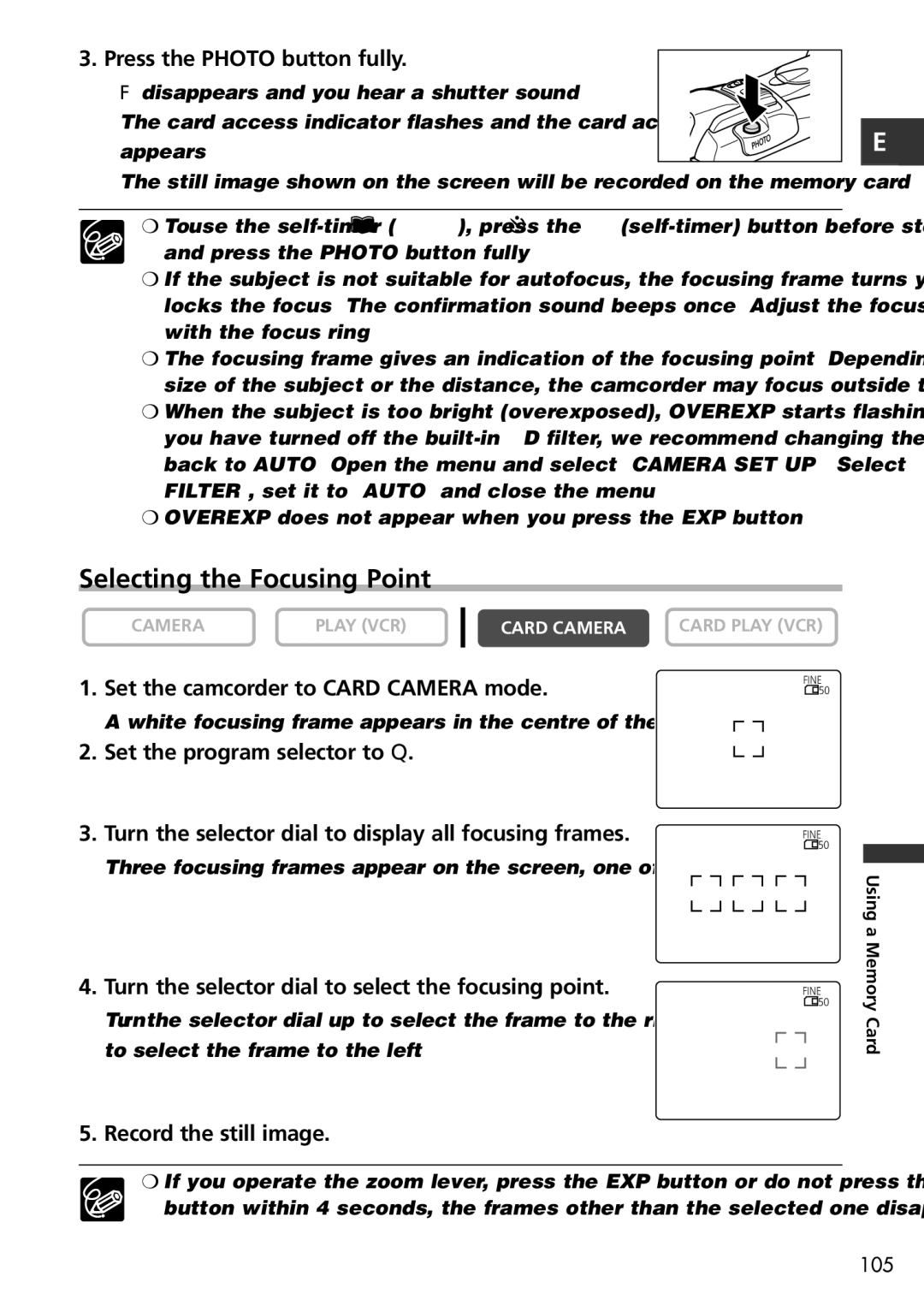MVX150i, MVX100i specifications
The Canon MVX100i and MVX150i are compact digital camcorders that embody the essence of portability and advanced technology, making them popular choices among amateur filmmakers and casual users alike. These models, part of Canon's MV series, combine sleek design with functionality, catering to the needs of modern videographers.The MVX100i features a 1/3-inch CCD sensor, which provides impressive image quality and excellent low-light performance. With the ability to capture videos at a resolution of 720x576 pixels in the standard DVD format, users can expect clear and vibrant footage. The camcorder is equipped with a 10x optical zoom lens, allowing users to get closer to their subjects without sacrificing image quality. Additionally, the camcorder supports digital zoom, further enhancing its flexibility in various shooting scenarios.
On the other hand, the MVX150i takes things a step further by incorporating advanced image stabilization technology. This feature is crucial for hand-held shooting, as it minimizes the effects of camera shake, resulting in smooth and steady footage, even during dynamic movements. Both models include a built-in microphone and a headphone jack, catering to users' audio needs and ensuring high-quality sound captures.
Both camcorders come with a variety of shooting modes, including sunset, portrait, and sports settings, allowing users to adapt to different environments seamlessly. The MVX150i includes a wider LCD screen, enhancing usability when framing shots or reviewing footage. The intuitive interface provides an accessible experience for users of all skill levels, helping them get the most out of their recordings.
Canon has integrated digital effects and transitions in the MVX series, which can add a creative flair to videos during editing. Users can also take advantage of the camcorder's ability to record still images, which is particularly useful for capturing moments without needing a separate camera.
Connectivity features, such as USB and FireWire ports, make it easy to transfer footage to a computer for editing. Overall, the Canon MVX100i and MVX150i offer a well-rounded package of features and technological advancements, satisfying both novice users and more experienced videographers. Their combination of portability, image quality, and ease of use makes them exemplary choices for anyone looking to capture life's moments in stunning detail.

